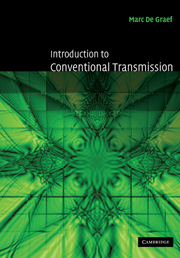Book contents
- Frontmatter
- Contents
- Preface
- Acknowledgements
- Figure reproductions
- 1 Basic crystallography
- 2 Basic quantum mechanics, Bragg's Law and other tools
- 3 The transmission electron microscope
- 4 Getting started
- 5 Dynamical electron scattering in perfect crystals
- 6 Two-beam theory in defect-free crystals
- 7 Systematic row and zone axis orientations
- 8 Defects in crystals
- 9 Electron diffraction patterns
- 10 Phase contrast microscopy
- Appendix A1 Explicit crystallographic equations
- Appendix A2 Physical constants
- Appendix A3 Space group encoding and other software
- Appendix A4 Point groups and space groups
- List of symbols
- Bibliography
- Index
5 - Dynamical electron scattering in perfect crystals
Published online by Cambridge University Press: 02 December 2009
- Frontmatter
- Contents
- Preface
- Acknowledgements
- Figure reproductions
- 1 Basic crystallography
- 2 Basic quantum mechanics, Bragg's Law and other tools
- 3 The transmission electron microscope
- 4 Getting started
- 5 Dynamical electron scattering in perfect crystals
- 6 Two-beam theory in defect-free crystals
- 7 Systematic row and zone axis orientations
- 8 Defects in crystals
- 9 Electron diffraction patterns
- 10 Phase contrast microscopy
- Appendix A1 Explicit crystallographic equations
- Appendix A2 Physical constants
- Appendix A3 Space group encoding and other software
- Appendix A4 Point groups and space groups
- List of symbols
- Bibliography
- Index
Summary
Introduction
In the previous chapter, we have seen that electron micrographs can display a rich variety of contrast features: thickness fringes, bend contours, intersections of bend contours, defects, and so on. Now that we know the basic experimental techniques to obtain the electron micrographs, we must take the next step and attempt to explain all of these contrast features, for both images and electron diffraction patterns. We have prepared the foundation for a theoretical description of electron scattering through the derivation of the relevant Schrödinger equation in Chapter 2. Now we must solve the equation for an arbitrary electrostatic lattice potential and an arbitrary electron wavelength.
We know from the experiments in the preceding chapter that there are two basic observation modes: two-beam observations, whereby only one diffracted beam has appreciable intensity, and multi-beam observations, where the electron beam is oriented close to a crystal zone axis, such that a plane in reciprocal space is nearly tangent to the Ewald sphere. We will begin this series of theoretical chapters by first solving the equations for the most general case (i.e. the multi-beam case). Then we will describe the two-beam case as a special case. While it is possible to approach the elastic scattering problem in the opposite way, i.e. first deal with the two-beam case and then generalize the results to the multi-beam case, the method followed in this and the next two chapters systematically deals with all important aspects of multibeam scattering, and the two-beam equations follow naturally from the results.
In this chapter, we will rephrase the governing equation (2.37) in several different ways, and work out formal solution methods for the N-beam elastic scattering problem.
- Type
- Chapter
- Information
- Introduction to Conventional Transmission Electron Microscopy , pp. 303 - 344Publisher: Cambridge University PressPrint publication year: 2003



